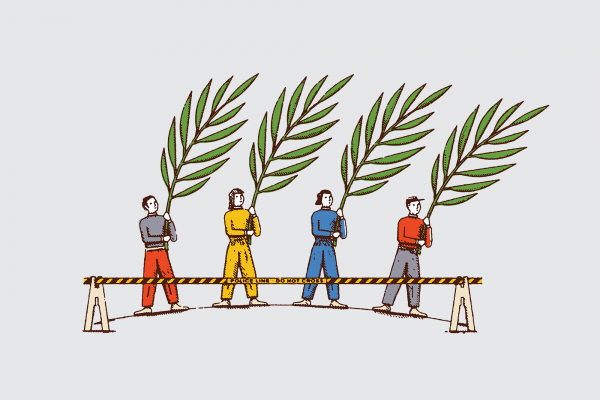IN LESS THAN two weeks in late 2019, three heads of government (in Iraq, Lebanon, and Bolivia) agreed to step down under pressure from mass protests. Earlier last year, long-standing military dictators in Sudan and Algeria were forced from power following popular uprisings.
On their own, these events are remarkable. What makes them truly extraordinary is that they came amid a worldwide protest wave from Hong Kong to Manipur to Chile that has toppled governments, led to new social policies, and challenged basic economic structures.
Authoritarian regimes are not protesters’ only targets. In Chile, considered an oasis of stability in South America, protests triggered by a hike in subway fares have grown into popular demands for an end to corruption and economic inequality. And the global climate movement has used walkouts, sit-ins, and civil disobedience to dramatize the need for urgent action. In each case, popular dissatisfaction with traditional institutional approaches has encouraged a turn to extra-institutional (and at times extra-legal) resistance.
Surprisingly, this proliferation of people-power movements has taken place amid a period of declining effectiveness for movements. While around 70 percent of major nonviolent movements in the 1990s succeeded, only around 30 percent did so from 2010 to 2017, according to Erica Chenoweth, a Harvard University political scientist. Protests have been easier to start but more difficult to resolve. So, have the movements of 2019 broken these trends?
We link the declining rates of effectiveness and their potential reversal to the emergence of parallel global networks of protesters and repressive governments (both dictatorships and democracies), who use increasing access to global information to rapidly learn from one another. This means that ideas, symbols, and tactics that both help movements succeed and successfully suppress them spread quickly from their origins to other struggles. In the past, waves of successful protests often lasted years. What we are seeing now—and are likely to see more of in the future—are short, sharp waves of successful protests followed by short waves of failures.
Activists learning from struggles in other countries is nothing new. Martin Luther King Jr. and James Lawson studied the ideas and tactics of the Indian independence movement. Young activists who spearheaded the successful Bulldozer Revolution against Serbian President Slobodan Milosevic trained other activists who went on to lead their own successful movements in Georgia, Ukraine, and Egypt.
What’s new today is the speed of this learning. In 2011, only weeks after Egyptian activists occupying Cairo’s Tahrir Square forced President Hosni Mubarak from power, their tactic was being replicated in cities across the Middle East. Months later, it inspired the Occupy Wall Street movement in the U.S. Social media is often pointed to as a key factor facilitating this diffusion, but the spread is often simpler: A robust global media can easily spread symbols, tactics, and lessons learned.
But governments are learning too, at an increasingly rapid pace. In the 1980s, it took Argentina’s military dictatorship years to adapt its repressive strategies in response to international outcry over the violence in neighboring Chile. In 2011, weeks after the beginning of the Arab Spring in Tunisia, the Syrian government had already crafted a strategy to snuff out a popular uprising at its inception.
Governments and corporations are also rapidly spreading practical tools to prevent and respond to dissent. China is a pioneer in this. Having built their own surveillance state with millions of AI-powered facial recognition cameras, Chinese companies now distribute their technology and expertise to dozens of countries, including democracies such as Germany or Denmark.
International learning networks are not the only important factor influencing protest movements’ success. When taking domestic political conditions into account, some scholars find little or no significant international influence on protests at all. Our understanding of any protest movement must be deeply rooted in the specificities of its context.
And while social media and global learning networks accelerate mass mobilization, successful movements also require organization and resilience. Organizing structures, including church-based networks, affinity groups, and neighborhood committees, build the trust, relationships, and commitment necessary to sustain the struggle amid repression. And finally, structural changes take time and deep organizing, something that can be lost in the speed of modern-day protests.
Last year the world saw incredible successes for protests in difficult circumstances. Yet it is likely that this peak will be followed by a reversal as repressive governments learn from each other’s failures and adapt to the new protest wave. Activists will have to be alert in maintaining the speed with which they learn from one another’s successes and failures—and invest in the organization necessary to maintain their fight for a just society over the longer term.

Got something to say about what you're reading? We value your feedback!







